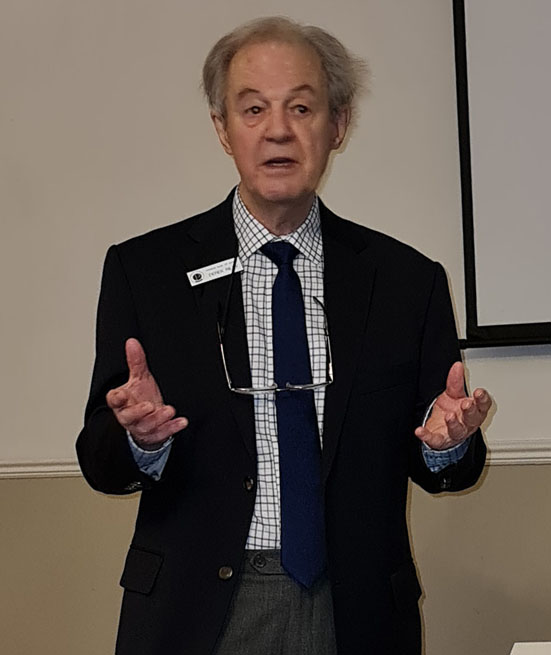Salisbury (Sarum) Probus Club
Sarum Probus Club is an organisation for retired men living in the Salisbury Area.
Previous Meetings 2023

On 27th January 2023 Sheila Hart presented a
wonderful array of “Holiday Photos”, ranging from the Jewish
Quarter in Prague, through Norway & the Arctic Circle,
North Cape taking in the Northern Lights, South America
and a trip to the Falklands which proved so informative. The
wonders of Singapore certainly deserved further viewing. The
highlight was without doubt the magnificent close-up shots of
the whales while cruising the inner passage to Alaska. Sheila’s
obvious enthusiasm for her holidays certainly left us wanting
more.
___________________________
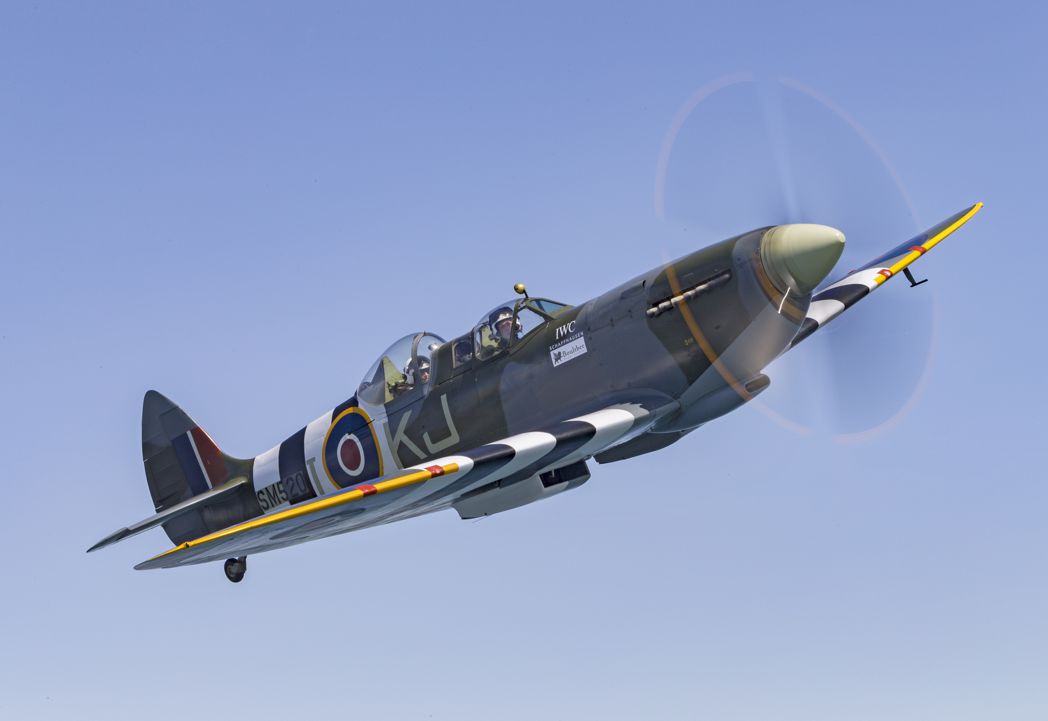
On
Februay 11th John Hart gave us 2 video presentations
Video 1 was about
the funding of the Spitfire manufacture during World War 2
In addition to those manufactured under government funding, donations to fund and name Spitfires were made by individuals home & abroad plus various crowd funding organisations.
The
aircraft did not have any armaments when they left the
factory,This was carried out by the Air Ministry and the RAF
Video 2 (Due
to time constriction’s this was not completed)
This
was about the origins of the spitfire particularly the Wing
shape. and the influence of the Schneider Trophy winning
seaplane
On February 25th 2023 Probus Club of Sarum welcomed author David Bickerton who had a riveting as well as heart-warming story to tell.
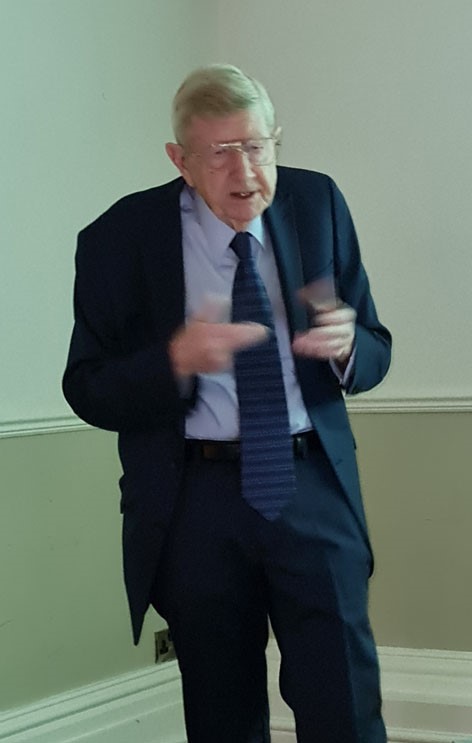
The actors were his father and mother against the
backdrop of World War II. David put the story together based on
their surviving 143 love letters.
His father Don was a civil servant who joined the Navy
as a 22 year old volunteer in 1939. He took part in the Dunkirk
evacuation as member of
RNVR. This was followed by
the sinking of the
Bismarck on the cruiser Dorsetshire.
David’s mother, Linda, joined as a 20 year old volunteer
the WAAF in 1941. She became a radar operator serving eventually
at five different RAF stations.
Don and Linda first met briefly in 1942and could only
keep in touch through correspondence.
After promotion to Lieutenant Don took command of a
minesweeper joining the 25th
Flotilla bound for Gibraltar. Minesweepers had to form the
spearhead for beach landings. During his war service Don was
therefore part of six allied landings from the first in North
Africa to the last in the South of France. There he and his crew
were welcomed and celebrated by the local resistance who
provided the ship’s crew with a ”Pact of Friendship”. Many years
later David was able to retrace his father’s steps and provided
the mayor and town with a copy of his book.
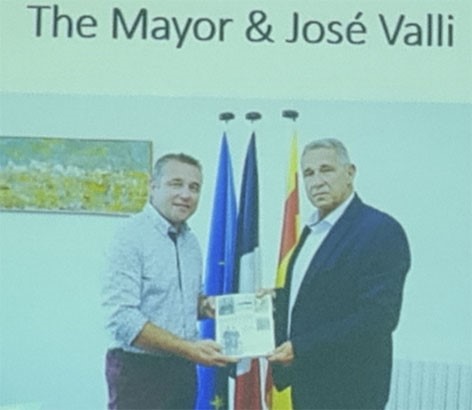
Throughout these tumultuous times Don and Linda were
only able to keep in touch through their letters and quite
sporadically during the last year of the war until July 1945.
Don was able to propose marriage via telegram to Penzance. Their
marriage last 65 years until Don’s death aged 90.
_________
Flying Boat Adventures – Probus Club of Sarum
On 24th March 2023 Probus Club of Sarum were treated to Sunderland
flying boat adventures by club member
Derek Riley.
Derek opened his navigator’s logbook for us and took us back to the
1950s.
His story started with an old school friend making him aware of the
Forces’ preselection procedure. Once passed he would be eligible to
become aircrew during his National Service. In 1953 Derek decided
therefore to join the RAF after he had promised his mother not to
become a pilot on account of the dangers involved.
His navigator training included a Canadian Pacific 1st class cruise to
Canada for an extended training course. Then navigators had neither sat
nav nor radio aids at their isposal.
Eventually Derek was based at Pembrokeshire flying boats while the
remainder of his squadron were all in Singapore.
In late 1956 the RAF was looking for volunteers to transfer
reconditioned Sunderland flying
boats to Singapore, four engine double deck planes with 11 crew.
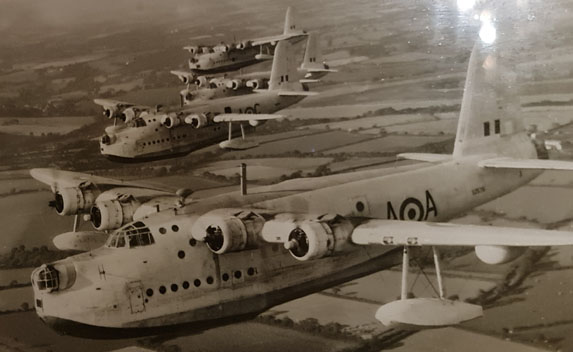
On Feb 9, 1957 he boarded his Sunderland at Pembroke Dock. With a
cruising speed of only 135 mphr, numerous stops for refuelling and
repairs
as well as detours enforced by diplomatic and political difficulties it
took 15 days to reach Singapore. Net flying
time was 56 hrs 20 minutes!
Their route took them via the
South of France, Malta, Tobruk Harbour, Lake Habbaniyah near Bagdad,
Bahrain Yacht club, Pakistan, Ceylon (Trinkamalee) and Gan (Maldives).
Based in
Singapore Derek and his crew were engaged in both anti-submarine
operations as well as night time bombing missions against insurgents in
Malaya. We were assured that there was also agreeable “down time” around
Singapore including in Raffles.
It obviously was attractive enough for Derek to volunteer for a second
transfer tour lasting from
June 13 to July 9 with 90 hour net flying time.
______________________________
Bloodhound, a British engineering adventure
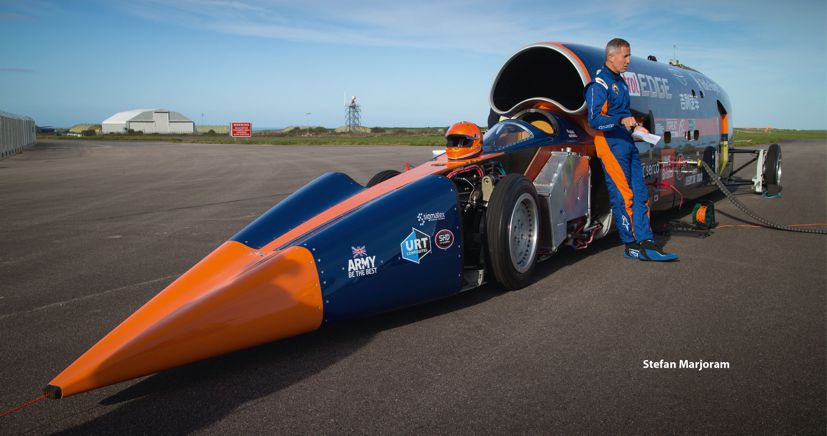
On 14th April Club member
Alan Frener treated us to a presentation about an exciting British
engineering adventure: Bloodhound – The world’s most advanced
straight line racing car, on a hunt for The World Land Speed Record. The
first record dates back to
1898 - Jeantaud Duc – Electric, established by Gaston de Chasseloup-Laubat at 39 mph.
From the 1920s on this was followed by a long line of British record
holders culminating in Andy Green’s
1997 record of
763mph with Thrust SSC. Thrust SSC used
two RR Spey engines. In the early 2000s rumours started of American and
Australian preparations to attempt to better this record.
This led to the formation of Project Bloodhound. In October 2008 Lord
DDrayson announced the project at the Science Museum. The project
was conceived as a leading edge technology project to inspire and to
educate. It brought together illustrious names of British academia and
industry eventually including Swansea University, University of West of
England , Rolls Royce and many others. Bloodhound led among other
achievements to advances in rocket engine construction. Its website,
exhibitions and educational events reached more than 2 million school
pupils bringing the STEM subjects nearer to them.
Alan’s enthusiastic talk provided a unique insight for the audience as he
had been one of the key participants over the years filling the role of
Senior Ambassador for the project team.
On 17th November 2019 Bloodhound achieved its target of 600
mph. 0 to 628 mph in 50 seconds in the South African dessert. However,
funds ran out and the final record push has had to be postponed
indefinitely.
Griffons,
Merlin’s, Spitfires
On 11th May
the
Club was able tob> welcome back Kevin Patience for a
talk on how
he found, dug up and identified a spitfire in Malta.
Kevin grew up in
Kenya and joined as a Boy Entry the RAF in 1961. In addition to flying
training and navigation school he was trained as a diver and diving
instructor. Diving became very much his passion in addition to his
enthusiasm for Spitfires.
In 1967
he was posted to Malta. In addition to his RAF engineering duties he
engaged in seabed searches for sunk spitfires.As
Kevin explored the underwater world off Gozo, he came across the
remains of a World War II-era aircraft. The unmistakable shape and
distinct features left no doubt in his mind: after extensive search
he had found the Spitfire. Kevin and his team had known their must
be a spitfire wreck in the bay. However, drifting sand and prolific
seaweed turned it into a very difficult find.
Kevin carefully examined the wreckage,
noting the aircraft's (partial) serial number and taking photographs
from various angles. He wanted to document his find and share it
with the world.
Over the following days, Kevin and his team
meticulously researched the aircraft's history. They learned that
this particular Spitfire had crashed during a mission in 1942, when
it was shot down by enemy fire. The pilot had managed to eject
safely, but the plane had sunk into the depths.
Driven by his passion, Kevin collaborated
with local authorities and historical organizations to protect and
preserve the site. Together, they eventually arranged a
comprehensive survey and recovery mission to document and salvage at
least parts of the Spitfire.
As word spread about Kevin's discovery, it
caught the attention of historians, aviation enthusiasts, and the
media. He also engaged with the locals who recalled that they had
cut up and salvaged the pilot’s parachute in July 1942 while they
filled the pilot with wine.
From this information and the partial serial
number Kevin and his helpers were able to identify this plane and
his pilot, Saunders. The pilot eventually became a test pilot at
Castle Bromich and sadly died in a flying accident there.
The recovered spitfire is now on display in
the Malta War Museum.
Franz Schubert: A Life in Music
On 28th July, the Club was treated by our committee member Andrew Scarf to the life
story of Franz Peter Schubert.
Franz
Schubert was born 1797 in
the Himmelpfortgrund suburb of Vienna, Austria, during a time when the
city was the epicentre of classical music. The youngest of fourteen
children, Schubert's family recognized his musical talent early on,
ensuring he received formal music education. His father taught him the
basics of violin, while his older brother provided instruction on piano.
By the age of seven, Schubert was receiving lessons from the local
church organist, and by eleven, he had earned a spot in the Imperial
Court Chapel choir and the Stadtkonvikt, an established boys'
monastery-school, where he
studied music, including under Antonio Salieri, a renowned composer of
the era.
Schubert's
genius truly shone when he began composing. By his late teens, he was
already producing masterpieces, such as the song "Gretchen am Spinnrade"
(Gretchen at the Spinning Wheel). Throughout his life, though not always
well-received in his time, he created a staggering amount of work,
including over 600 lieder (songs), nine symphonies, numerous chamber
works, and piano compositions. Some of his most iconic works include the
"Unfinished Symphony," the song cycle "Die Winterreise," and the piano
quintet "The Trout."
While he was
prolific, Schubert struggled with the business side of music. Often, he
lived in near-poverty, relying on the generosity of friends and patrons.
Though he did have a circle of artistically-minded peers and was
well-regarded within this group, Schubert was not as widely recognized
or as financially successful as some of his contemporaries.
Personal Life and Untimely Death
Schubert's
personal life was marked by both companionship and solitude. Due to his
poverty he was unable to marry. While there's been speculation regarding
his relationships and sexuality, concrete details remain elusive. What's
evident, however, is that his social circle was integral to his
well-being. The informal gatherings known as 'Schubertiades' were
musical evenings where friends would gather to perform his works.
Tragically,
Schubert's life was cut short. By 1822, he began showing symptoms of
syphilis, a then-incurable disease. While he continued to compose
remarkable music during this period, his health steadily declined. On
November 19, 1828, at the age of 31, Franz Schubert passed away, leaving
behind an unparalleled legacy of compositions that would only gain their
full recognition posthumously.
Legacy
In the years
that followed, Schubert's works were championed by notable figures such
as Robert Schumann, Johannes Brahms, and Franz Liszt. Today, he is
celebrated as one of the pillars of Western classical music, with his
songs, in particular, being hailed for their emotional depth and beauty.
Schubert's ability to capture the nuances of the human experience,
coupled with his unique melodic gifts, has solidified his place as a
timeless composer, whose music continues to touch hearts around the
world.
The Falklands War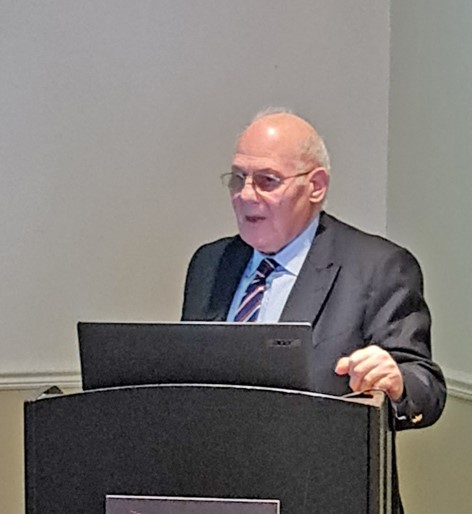
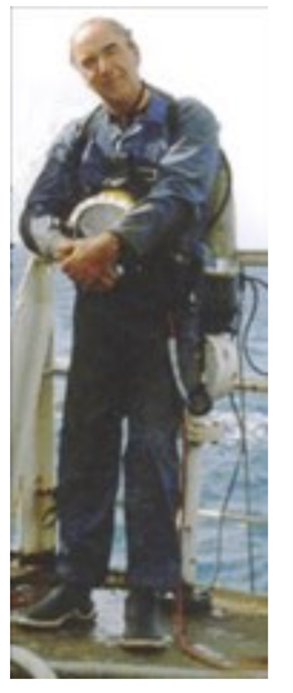
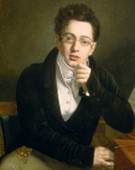
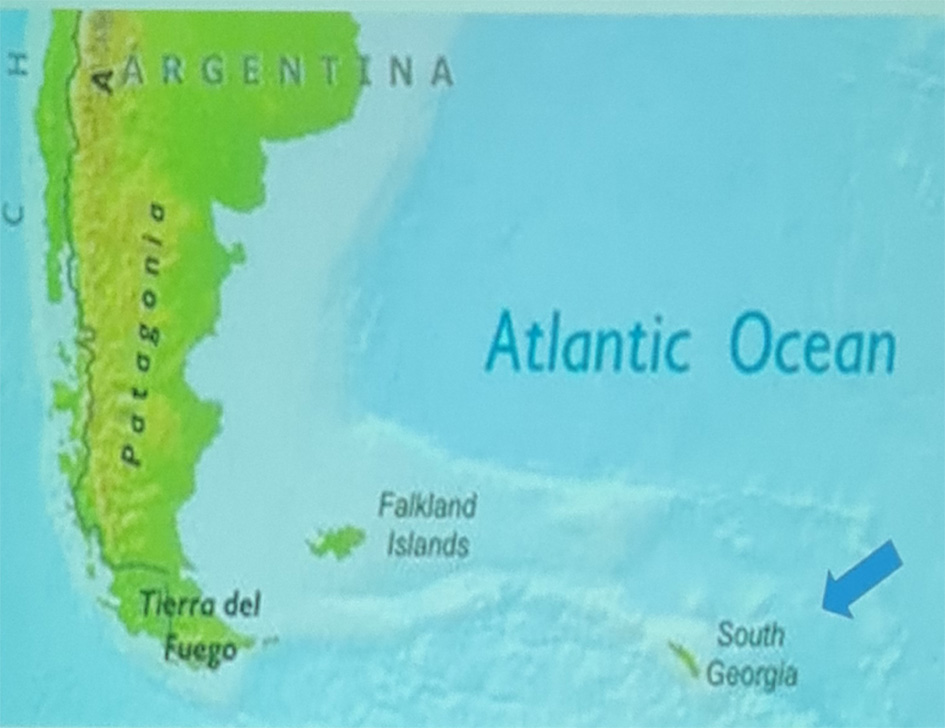
On August 25th James Porter gave the club
a well-illustrated overview of the Falklands War including fascinating
details.
The speaker was stationed at Port Stanley one year after the
conflict and was thus able to combine a strategic overview of the
campaign with local detail.
The 10-week conflict between Argentina and
the United Kingdom over the two British dependent territories in the
South Atlantic: the Falkland Islands and South Georgia and the South
Sandwich Islands began on April 2, 1982.
Argentine forces, eventually
12000 strong, invaded and occupied the Falkland Islands, followed by the
invasion of South Georgia the next day. The British government responded
by dispatching a naval task force to engage the Argentine Navy and Air
Force before making an amphibious assault on the islands. In support
eventually 52 merchant navy ships were requisitioned and speedily
modified.
On 12 April, 1982 the UK declared an exclusion zone around the
Falklands. On 2 May the task force deployed. It included five nuclear
submarines and the two aircraft carriers HMS Hermes and HMS Invincible.
The Argentine cruiser General Belgrano was sunk by the submarine HMS
Conqueror on May 2, 1982, with the loss of 323 Argentine lives. This
ended the threat posed by the Argentine surface fleet. However, enemy
aircraft and especially Exocet missiles continued to be a lethal thread.
The loss of HMS Sheffield pointed to errors and highlighted the
dangerous lack of point-to-point air defence. Also, multiple targets
confused the missile systems and made them ineffective. On 18 May the
amphibious force assembled and an SAS commando landed and destroyed 12
Bukhara aircraft. This was followed by the main amphibious landings on
May 21, 1982 at San Carlos Water on East Falkland in "Operation Sutton."
The landing comprised Army, Royal Marines, and Parachute units with
support from the Royal Navy and Royal Air Force. Col. Porter emphasised
what a feat it was. The troops had to march with all their heavy
supplies 25 miles over rough terrai. practically all their helicopters
had been lost during a major accident on Ascension Islands.
One of the
decisive battles was fought by the 2 Bn Paras, led by Col. H. Jones, at
Goose Green, despite being heavily outnumbered by 1000 dug in
Argentines. Eventually, the surrender was signed on 14 June 9.30 pm
During the ensuing discussion Col Porter pointed out that, surprisingly,
the overwhelming proportion of Argentine troops were poorly trained and
unmotivated conscripts. This led to the question whether the Argentine
military Junta was feeling fairly sure that there would not be a
decisive response from Britain.
_____________________________
The Splendours of Historic Clarendon Palace
On 22nd September the club was delighted to welcome back Salisbury
historian Ruth Newman for a riveting and beautifully illustrated talk
about historic
Clarendon Palace.
Nowadays it is the only palace in England in its
original landscape.
The origins of
Clarendon Palace date back to the early 12th century, with the initial
construction believed to have been started around 1130. The site was
initially used as a royal hunting lodge by Norman Kings. King Henry I
was one of the first monarchs known to have spent time at Clarendon
Palace. The palace was constructed amidst more than 2000 acres of royal
forests. There have been four or five deer leaps, places where deer
could jump in but not out.
During the 13th century, the palace underwent extensive
expansion under the reigns of various monarchs, notably King Henry III.
The King made significant additions to the palace,
Repeated waves of archaeological explorations have revealed the
enormous size as well as the splendour of the palace complex. There
is evidence of extensive kilns, including many
in Laverstock, as well as other workshops. They produced unique
circular tiles. One of the finds is the great Clarendon Kiln now in
the V&A. A splendid round tiled floor is in the British Museum.
Bombweed - Memories from the Home Front
On 9th November, the club was delighted to
welcome Maureen Armstrong for a talk about her mother’s as well as her
own war time memories. The talk was based on her mother’s papers and
novel. The latter was amended and published by Maureen’s sister Gillian
in 2018. It was the story of a young woman with a baby
being evacuated three times during the course of the war. Living in
Hastings, married to a policeman, she was given half a day’s notice in
1942 to be moved to Weston-super-Mare. Arriving there late in the
evening the only place where she could feed her eight months old baby
turned out to be the mayor’s parlour. Their assigned hosts were two very severe and
pious sisters who were not very pleased with their new guests. While
mother and daughter were in Weston-super-Mare the father had become a
bomber pilot with accordingly very restricted ability to communicate. When the bombing reached Bristol mother and baby
were moved again, this time to Portsmouth. From there they would be evacuated a third time,
now to a farm inn north Wiltshire. This proved a welcoming and cheerful
abode. Their new refuge also gave them a front seat in witnessing the
troop and aircraft movements towards D-day. Eventually they also had contact again with
Maureen’s father. His last flight skirted disaster when hit by German
anti-aircraft fire. However, he managed to get the stricken plane over
the Swiss border. The crew, with the exception of one unfortunate,
managed to bail out before the plane exploded. They were interned and
eventually reached Britain via occupied France, Spain and Gibraltar. Maureen concluded her talk by encouraging her
audience to tell the young an about their war time experiences. This
encouragement was taken up enthusiastically on the spot!
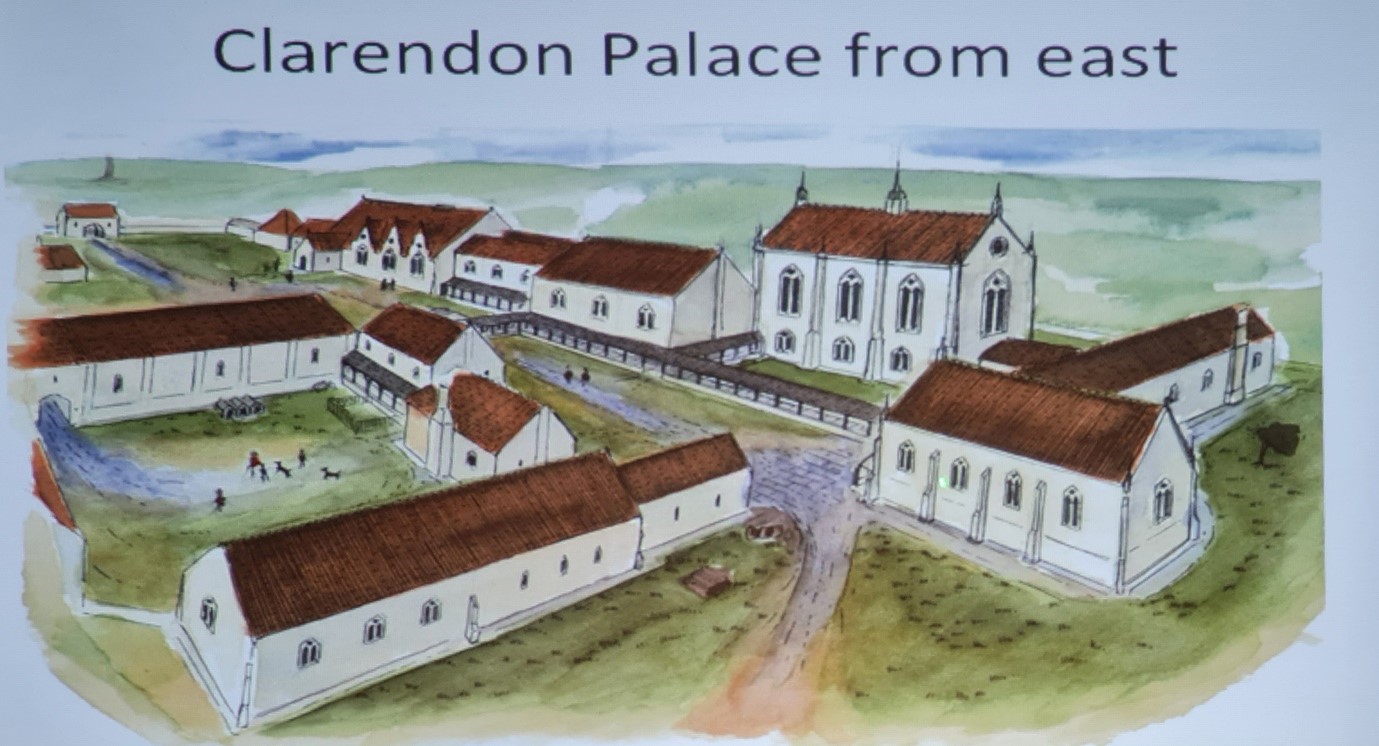

music with a difference on 13th October.
He started off with Summer Storm from Vivaldi's Four Seasons. The piece
has been transcribed for the organ by
Jonathan Scott and played by him on the organ at Bridgewater Hall,
Manchester.
The world of classical music is rife with familiar works, yet every so
often, a fresh interpretation comes along that gives the listener a
newfound appreciation for an old-classic.
Scott's transcription does more than just transmute the notes from
violin to organ; he understands the nuances of the organ, using its
distinct tonal colours to breathe fresh life into Vivaldi's composition.
The piece transitions searnlesslv from quiet moments of foreboding
tension to explosive releases of musical en-ergy, capturing the ebb and
flow of a
storm's unpredictable nature.
Next Alan Introduced us to Flash Mobs. They are "spontaneous gatherings"
of people who assemble suddenly in a public place,
perform a pre-defined action, and then quickly disperse. Originating in
the early 2000s, the concept quickly gained traction as a form of
performance art, largely due to its ability to surprise and captivate
unsuspecting audiences.
The first example was with the late Mexican tenor Rafael Roja recorded
at the Arndale Centre in Leeds.
The second example was an extract from Carmina Burana by Carl Orff,
written in 1935/36.
and impassioned declarations of love. Some of the text'is quite rude.
After excerpts of comic music from the forties the final pieces were by
Caroline Esmeralda van der Leeuw, better known as Caro Esmarald, and
Richard Wayne Pennyman.
"Little Richard" concluded these excerpts with a spectacular 1958 piano
rendition from "Good Golly Miss Molly."

For more previous meetings 2019-21 2021 2021-2 2022 2023 2024 2025
For more recent talks click here
